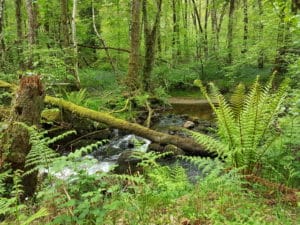Trees and woodlands are vitally important habitats for a huge variety of wildlife. In Devon, we have some of Britain’s most ecologically important woodlands which support many threatened species including hazel dormouse, barbastelle bat, lesser spotted woodpecker, blue ground beetle and tree lungwort lichen.

Below you’ll find multiple links to information to help you manage and restore your woodlands for wildlife. You’ll also find some useful links to guidance on planting trees and creating new woodlands.
Remember: Before planting any new trees or woodland, you must ensure you don’t accidently destroy or damage important existing habitats or disturb protected or priority species. For example, new areas of woodland are often accidently planted on important grassland habitats. To avoid this problem, you’ll need to check the ecological value of your chosen planting area before you can proceed. Explore our Discover page to find out how to survey and identify habitats and species. If you’d like help with this, take a look at our list of contacts for free and paid advice.
-
Managing woodlands
How to set up and manage a community Woodland: Community Woods (Woodland Trust)
How to manage a woodland for wildlife (Wildlife Trusts)
Managing your woodland for wildlife (Woodlands document)
Ancient Woodland Restoration – Advice and Support (Woodland Trust)
Managing ancient and native woodland in England (Forestry Commission document)
Woodland management for Dormice (Peoples Trust for Endangered Species)
Woodland management: rides, glades and coppice (Kent Wildlife Trust)
- Planting trees and woodland